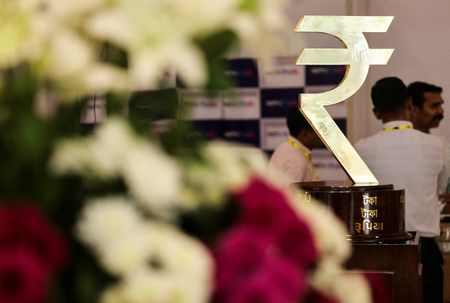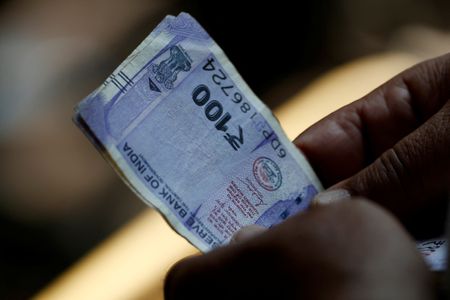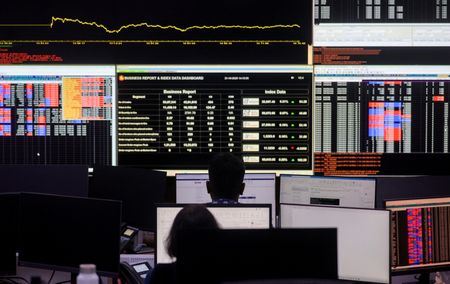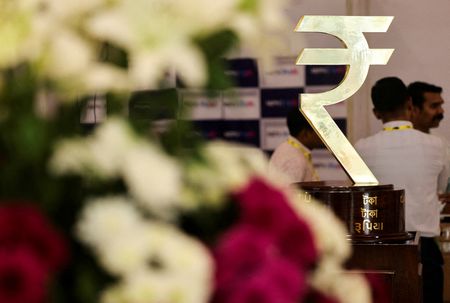By Vivek Mishra and Pranoy Krishna
BENGALURU (Reuters) – The Indian rupee will give up nearly all of its year-to-date gains against the dollar by the end of July as a slowing economy dampens investor sentiment and the Reserve Bank of India simultaneously loosens its grip on the currency’s movements, a Reuters poll of FX analysts found.
Supported by net capital inflows of around half a billion dollars from foreign investors into Indian equities in April the rupee gained more than 1% last month and was up more than 4% from a lifetime low of 87.95 per dollar set in February.
However, most FX analysts in an April 30-May 6 Reuters poll expected the rupee’s recent strength to fade soon as the economy was showing signs of a cyclical slowdown.
India’s economy, which grew 9.2% in the fiscal year 2023–24, was projected to have expanded at a slower pace of 6.3% in both the following fiscal year and the current one, a separate Reuters poll showed.
In three months the rupee was forecast 1.2% weaker than it currently is at 85.50 per dollar, down 2.2% at 86.30 in six months and then at 86.28 in a year, a trend similar to an April survey. It was up about 1.4% for the year against the greenback on Tuesday.
“The strengthening is definitely a surprise, given…that capital flows haven’t really improved,” said Gaura Sengupta, chief economist at IDFC First Bank.
“The depreciation for the rupee…is largely a capital flow story…which, in this uncertain environment, will not be very strong.”
The range of forecasts for the six-month outlook in the poll was the widest in more than two years, showcasing the RBI’s reduced intervention in the forex market under Governor Sanjay Malhotra.
“I think the RBI has not been intervening lately unlike the previous regime where we saw the RBI step in on either side. There is a big swing happening and I think the RBI is allowing that to occur,” said Upasna Bhardwaj, chief economist at Kotak Mahindra Bank.
The currency’s implied volatility is at its highest level in two years, reflecting heightened uncertainty and risks to the rupee’s outlook.
Expectations that the RBI will cut interest rates by a cumulative 100 basis points to 5.50% in the current easing cycle to support a slowing economy were also likely to exert more downward pressure on the rupee.
(Other stories from the Reuters May foreign exchange poll)
(Reporting by Vivek Mishra and Pranoy Krishna; Polling by Vijayalakshmi Srinivasan and Veronica Khongwir; Editing by Hari Kishan)









